When it comes to World War II, many of us think of the war in Europe. Of D-Day and the Normandy invasion, of the horrors of the concentration camps and the battles to liberate Nazi-occupied territories in France, Poland, and beyond. However, even while those decisive battles were taking place, war was being waged on another front altogether—a campaign of ships, planes, and small islands throughout the Pacific, where Allied forces clashed with the Imperial Japanese Army in bloody fighting with high casualty rates and often terrifying stakes.
These 20 books tell the gripping and too-often-forgotten stories of the battles in the war’s Pacific Theater, from the decks of ships to the steaming jungles of islands, from the beaches of Iwo Jima to submarines cruising beneath the surface, and from the POW camps to planes flying high above the waves.
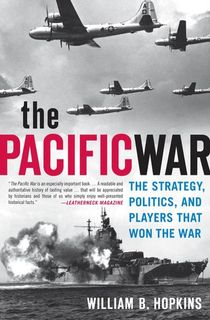
The Pacific War
A Marine veteran who fought in the conflict himself, William B. Hopkins was privy to very little of the top-down decision making that shaped the Allied policies throughout World War II’s Pacific Theater. And yet, years later, he sought to document a “comprehensive study of the structure and philosophy that brought victory over Japan” (Roanoke Times) in this exhaustive book on the “policy, grand strategy, economics, and particularly the personalities, political and military who directed the war” (NYMAS Review).

Rolling Thunder Against the Rising Sun
When we think of the war in the Pacific, we tend to picture planes and ships, or brave footsoldiers like the ones seen raising the flag at Iwo Jima in the iconic photograph. We’re less likely to picture tanks, and yet the U.S. Army’s independent tank battalions, already stationed in the Philippines in 1941, played a pivotal role in the Pacific Theater.
Historian Gene Eric Salecker unearths and explores the frequently overlooked exploits of the American armored divisions on jungle islands where these massive machines of war may have seemed out of place, but were nonetheless often instrumental to Allied victories.
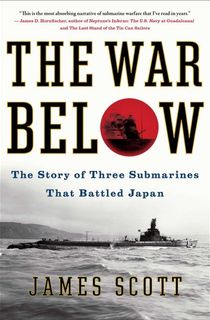
The War Below
While ships and planes filled the air with shots, submarines fought a less visible but even more deadly battle below. In fact, submariners were up to six times more likely to perish during the war in the Pacific than a sailor on board a surface vessel. In this “gripping” (Kirkus Reviews) account of three of the most important Allied subs involved in the Pacific theater, Pulitzer Prize finalist James Scott tells the “riveting” (Washington Post) story of the submariners from their own lips, based on more than 100 interviews with submarine veterans and thousands of pages of previously unpublished letters and diaries.

Great Naval Battles of the Pacific War
Over the years, there have been a great many books detailing some of the most important battles of the Pacific Theater—Midway, Guadalcanal, the Java Sea, and others—but these have all been written with the benefit of hindsight. Collected in this book, compiled by historian John Grehan, are something else: the accounts of the battles as they were compiled in real time, for and on behalf of the Admiralty, giving a dispassionate and firsthand view of the victories and defeats that went into each conflict.
The result is a one-of-a-kind book that “provides naval warfare students an unvarnished look at how contemporary leaders saw these battles and their lessons” (WWII History Magazine).
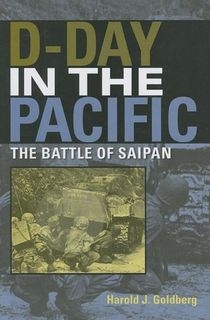
D-Day in the Pacific
While the attention of the world may have been on Normandy in 1944, the battles being fought in the Pacific were no less strategically important. In this book drawn from recent interviews conducted with surviving US veterans, Harold J. Goldberg examines the Battle of Saipan, a sometimes overlooked but vitally important conflict which, he argues, was the turning point in the Pacific Theater in this “engaging, clearly written and interesting volume that should be recommended to all students studying the Pacific war” (Journal of Military History).

Stalin's War on Japan
Much has been written about the Allied victories (and defeats) in the Pacific Theater over the years, but comparatively ignored—at least among Western scholars—are the rapid and decisive victories won by the Red Army in Manchuria and beyond. An established expert on siege and naval warfare, author Charles Stephenson sets out to redress this omission by “cover[ing] the campaign at multiple levels, from the high-level interactions between leaders like Truman and Stalin to the battlefield experiences of the participants” (WWII History Magazine).
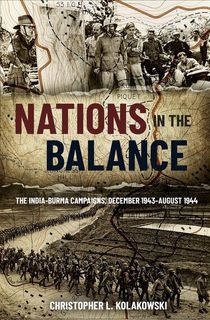
Nations in the Balance
Between December 1943 and August 1944, clashes between Allied and Japanese forces throughout Southeast Asia helped to determine the outcome of the war and shape geopolitics for decades to come. In this “highly readable and engrossing text, richly adorned with strategic nuances” (Army History Magazine), historian Christopher L. Kolakowski “reminds us of the high stakes at risk for both Allies and Axis powers in Burma, as well as the heroism and willpower of all the combatants concerned” (Military Review).
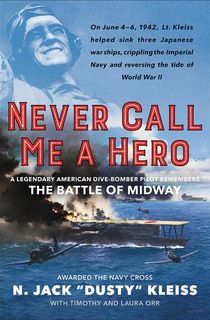
Never Call Me a Hero
A national bestseller hailed as an “instant classic” by Dallas Morning News, Never Call Me a Hero is the autobiography of pilot Dusty Kleiss, the only pilot in the war to land direct hits on three different ships, all of which sank. Called “the single most effective pilot at Midway” (World War II Magazine), Kleiss has been credited with single-handedly helping to turn the tide of the war, a laurel that he may have been uncomfortable accepting.
In this memoir published shortly after his death, we are treated to a story that only he could have told, a “standout autobiography for anyone interested in bravery, courage, and first-person accounts of military heroics during World War II” (Library Journal).
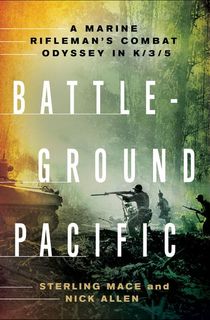
Battleground Pacific
Far from the skies or the decks of ships, US Marines and other soldiers braved jungle islands that tested their limits. Sterling Mace was one of those Marines, and in this “engrossing account” of the “vicious combat” (Kirkus Reviews) he encountered, he tells his own story, and also the story of the men on the ground in what is primarily thought of as a naval conflict. “You see the word ‘hero’ tossed around a lot these days,” raves the New York Post, “but Mace and his comrades were the real deal.”
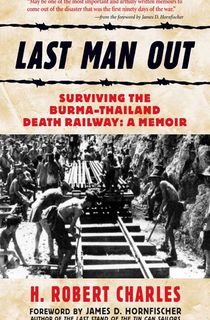
Last Man Out
Immortalized in the film The Bridge on the River Kwai, the so-called “Death Railway” was a railroad built between Japan and Burma, constructed primarily by the labor of prisoners, including Allied POWs. Among these were H. Robert Charles, one of the survivors of the harrowing ordeal, who describes both the brutality of the camps and the courage of those imprisoned within them in this “remarkable story, long overdue” (Arthur L. Maher, USN) that stands as an “effective addition to the history of this tragedy” (Library Journal).
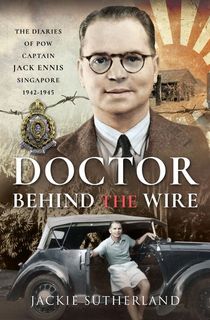
Doctor Behind the Wire
Jackie Sutherland’s father, Captain Jack Ennis, was a doctor of pathology who found himself in a Japanese POW camp during World War II, alongside other medical officers. Drawing from Ennis’ own diary entries, kept during his internment, Doctor Behind the Wire tells the story of his ordeal, as well as how he met his wife Elizabeth, how she fared during his imprisonment, and the story of another POW, Robert Heatlie Scott, Elizabeth’s former employer. Included in this one-of-a-kind story is the history of the famous Changi Quilts, with which spouses and loved ones passed secret messages stitched into the fabric.

I'm Staying with My Boys
Written in first person so vivid that “one would believe that ‘Manila John’ is still alive” (Col. Ken Jordan, USMC), I’m Staying with My Boys tells the story of one of the most famous Marines of all time, John Basilone, one of the subjects of the hit HBO series The Pacific.
The only Marine in World War II to have received the Medal of Honor, the Navy Cross, and a Purple Heart, Basilone’s unit held off 3,000 Japanese troops at Guadalcanal, and Basilone has been credited with singlehandedly destroying an enemy blockhouse at Iwo Jima. While much has been written of his service and exploits, this is the first family-authorized biography of his incredible life story.

On the Canal
Guadalcanal was the first major land offensive Allied forces launched against Japan during World War II. Among them was Master Sergeant Ore J. Marion. In this gripping book, Marion and his surviving comrades tell their stories, often in their own words, of what the fighting was like in that first, pivotal offensive. From moments of unspeakable brutality to scenes of touching humanity, their narratives capture what life was like on the front lines of the Pacific Theater.
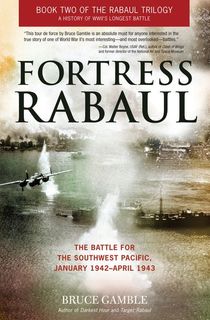
Fortress Rabaul
Rabaul was a fortification on the northern tip of the island of New Britain, captured by Japanese forces in January of 1942 and transformed into a key stronghold for their naval and aerial operations in the region. By the middle of 1943, its air strength stood at some 600 planes.
In Fortress Rabaul, Bruce Gamble continues his “tour de force” chronicling of the war (Col. Walter Boyne, USAF) in a “detailed reference book that reads like a novel” (Air Classics). By drawing on both Allied and Japanese sources, Gamble presents the story of Fortress Rabaul with “wide research, thoughtful analysis, and a gifted story-teller’s panache” (WWII History Magazine).

The Battle of Iwo Jima
Few other battles in the history of World War II are as legendary as the battle of Iwo Jima. The Japanese island itself may have been just eight square miles in size, but the battle that took place there looms much larger in the memory of the world, thanks in no small part to one of the most iconic images ever captured as part of the war, the images of soldiers raising the American flag on the summit of Mount Suribachi. As part of the Images of War series, author and historian Mark Khan traces the vivid story of one of the bloodiest and most important battles of the Pacific Theater.
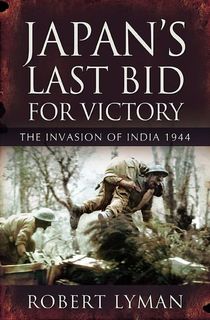
Japan's Last Bid for Victory
A former British Army officer himself, Robert Lyman brings his considerable expertise to this detailed account of the bloody fighting which took place in Burma in 1944, as the war was drawing to a close. The result is “an excellent account of a series of very hard fought battles that helped prepare the way for the British re-conquest of Burma” (History of War), a pivotal yet often under-studied portion of the massive conflict which shook the globe during the Second World War.

The Luck of the Draw
During World War II, submariners suffered higher fatality rates than any other branch of service. Yet, despite that, many brave souls volunteered to serve on these dangerous deep-sea vessels. Among them was C. Kenneth Ruiz, who spent much of the war on board the USS Pollack. In this no-holds-barred memoir, he tells not only the many stories of near misses and narrow escapes that he experienced in one of the most dangerous parts of the war, but also of how he came to be aboard the Pollack in the first place, at the mercy of a coin flip that saved his life and cost him a friend and classmate.
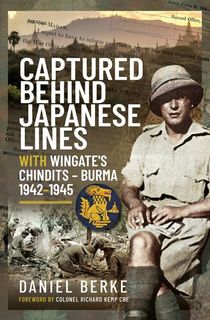
Captured Behind Japanese Lines
Formed to strike deep behind enemy lines, the Long Range Penetration Groups (colloquially known as Wingate’s Chindits, after Brigadier Orde Wingate, the officer who organized them), suffered terrible casualties but were also instrumental in breaking through the Imperial Japanese Army in Burma.
Among these soldiers was Frank Berkovitch, a Bren-gunner who was ultimately captured while attempting to withdraw across the Irrawaddy River. As a POW, Berkovitch endured two years of imprisonment, yet he survived to become a quiet tailor with an incredible story, recounted in this unforgettable book which “exemplifies the courage of the men who faced this ordeal” (Colonel Bob Stewart, DSO MP).
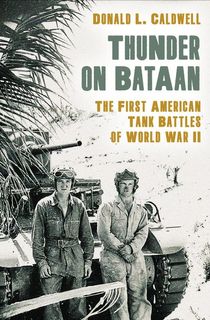
Thunder on Bataan
Much has been written about what came after the surrender of some 15,000 American soldiers and 60,000 Filipinos in Bataan in April of 1942—the Bataan Death March, the horrors of the POW camps, and the Palawan massacre, where prisoners were set on fire by their captors. But before all of that, the earliest American tank battles of World War II took place in the Philippines, where the American Provisional Tank Group had arrived just weeks before the Japanese attack on Pearl Harbor.
This “remarkable” and “well-told” (Jay A. Stout, author of Air Apaches) book tells the story of those early battles, and how the Provisional Tank Group helped to shape the war in the Pacific.

Stay the Rising Sun
In the Coral Sea, the ship known to her crew as the Lady Lex, the USS Lexington, went down in the midst of a decisive battle against Japanese naval forces. Yet, despite this loss, the destruction of the USS Lexington provided critical strategic insights that Allied forces would subsequently use to help them win the war. In this 2016 Military Writers Society of America Bronze Medal Winner, former navy pilot Phil Keith shares the true story of this remarkable ship and her valient crew.
This post is sponsored by Open Road Media. Thank you for supporting our partners, who make it possible for The Archive to continue publishing the history stories you love.
